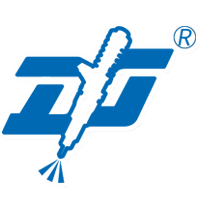The diesel engine’s heart is the fuel injection pump, deliverying fuel to maintain the a rhythm or timing which make the successfully running of the engine.At the same time,it also control the fuel quantity to gain the power required.While in the gasoline engine,the injection pump’s function is in the throttle and the ignition system.So if there is any probem in the gasoline pump,it is necessary to check compression, fuel, and spark.Because there is no ignition system in the diesel engine.Comparing to the gasoline engine,the diesel engine has the advantage of a direct result of better fuel injection.Today China Balin Parts Plant,a global manufacturer for common rail parts & diesel injection parts,will show you how the injection pump work. Inline-injection (Jerk) Pumps In 1890s the first pumps to use plungers to force metered fuel to the combustion chamber were developed.Later in 1927,the mass-produced helix-controlled inline pump was also introduced by BOSCH.The pumps,sometimes called jerk pumps,looks like Bosch P7100 (P-pump) on ’94 to ’98 Dodge Ram 5.9L Cummins engines.Meanwhile they constructed from separate pump and plunger units connected inline, one per cylinder.They are activated by a cam, which is mechanically connected to the engine.Although they are not to the sophistication of an electronically controlled system,the pumps still have the function of vary timing.Inline injection pumps look like mini inline engines.It delivered 3,000-5,000 psi of injection pressure for the earliest mini inline injection pumps while 18,000 psi of pressure for the latest ones,Bosch P7100 which we could find in ’94 to ’981/2 Cummins engines. Distributor (Rotary) Injection Pumps There is only one fuel-metering plunger in the distributor injection pump.Similar to the distributor working principle on a gasoline engine,the hydraulic is connected with different ports on the distributor head through a spinning rotor.This rotary injection pump has the advantage that all the shots of fuel are exactly the same which make a smaller overall package.Comparing to the inline pumps,its another benefits is that it has less moving parts.Let’s take mechanical rotary pumps (Stanadyne DB2 and the Bosch VE) for example.The pressure 6,700 psi is produced by Stanadyne DB2 and 17,000 psi by Bosch VE. Another example is an electronic rotary pump like Bosch VP44.It could produce 23,000 psi pressure.Even comparing to new common-rail CP3 pumps,we could also say it is the smartest pump.Because it not only could create pressure,but also control the timing and quantity of fuel delivered to the engine. Common-Rail Injection With common-rail fuel injection,the pump don’t have much right to decide when the fuel it pressurizes gets delivered and at what quantity.For instance,the CP3 pump receives fuel from the fuel tank.Then it uses radial-piston design to increase pressure immensely.After that,the common rail,basically an accumulator for the injectors,get this highly pressurized fuel.The injectors take over from there. Unit Injectors The early diesel engineers could always find the problems is produced in the lines connecting the injection pump to the fuel injector.So in 1905, Carl Weidman got rid of them by combing the injection pump and the injector. The unit injector is a compact fuel injection design in which the pump plunger creates high pressure by a mechanical force applied by the engine. The plunger and injector blend into one unit whose job is to deliver the fuel spray to the combustion chamber. We could find the unit injector apply commonly to Volkswagens and large diesel engines.
Post time: Apr-16-2019
